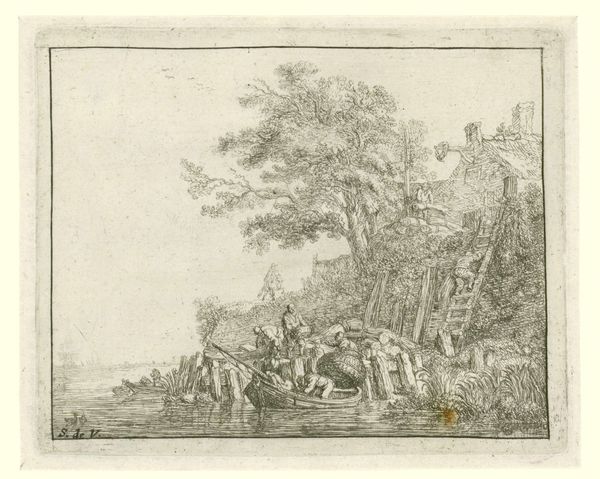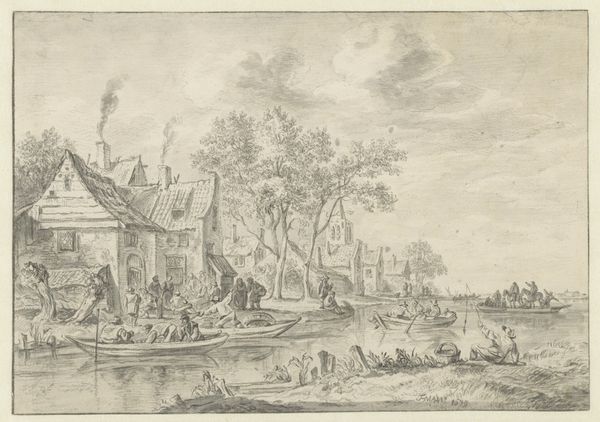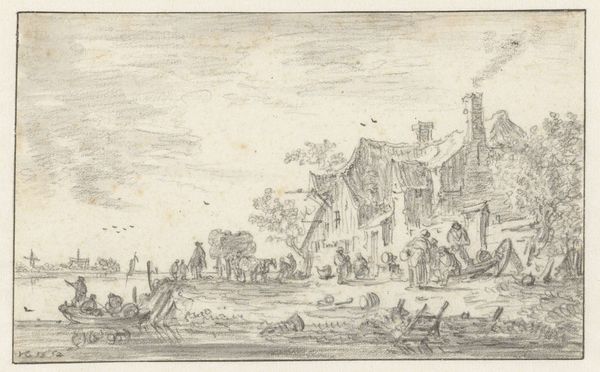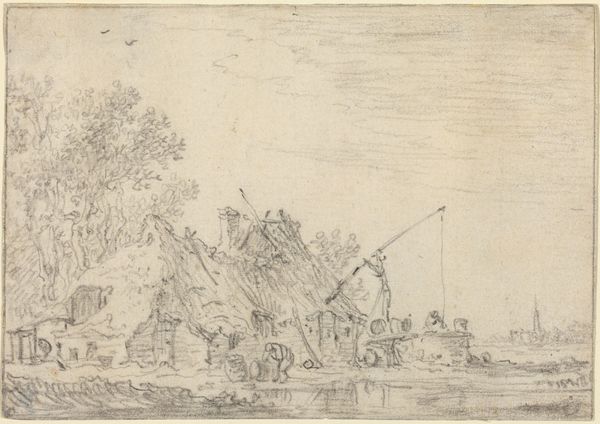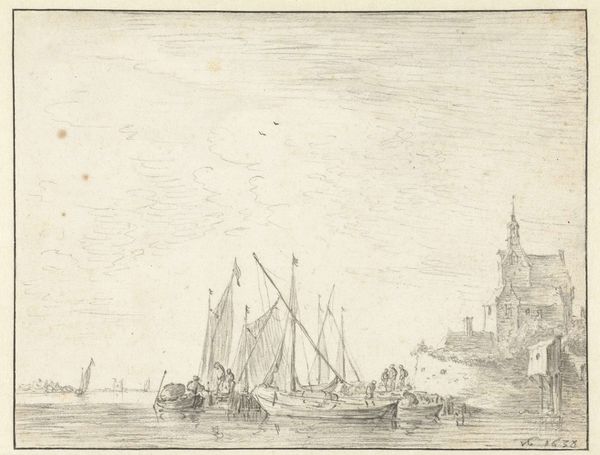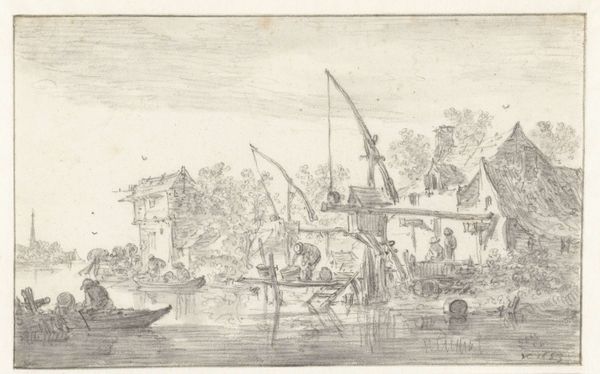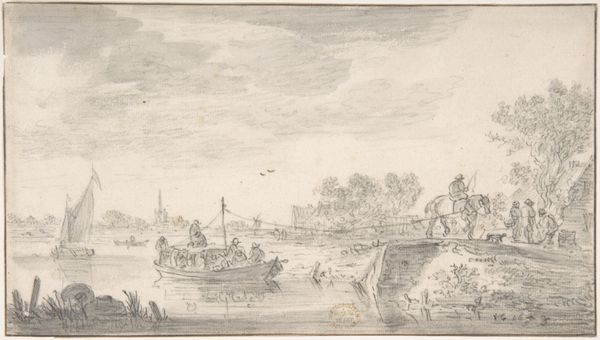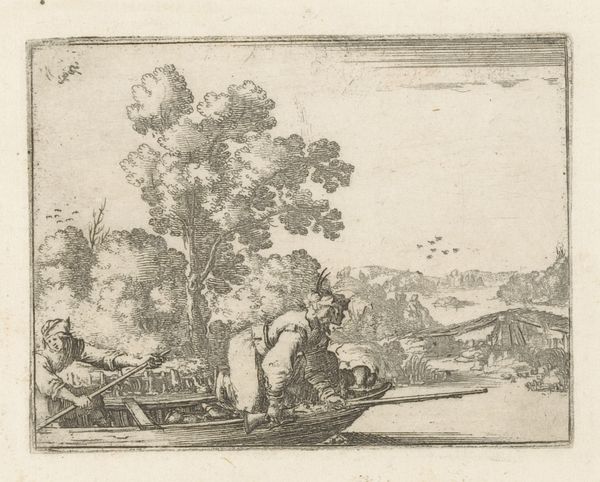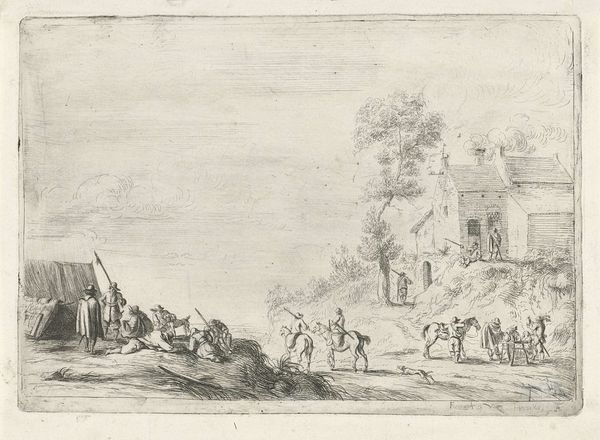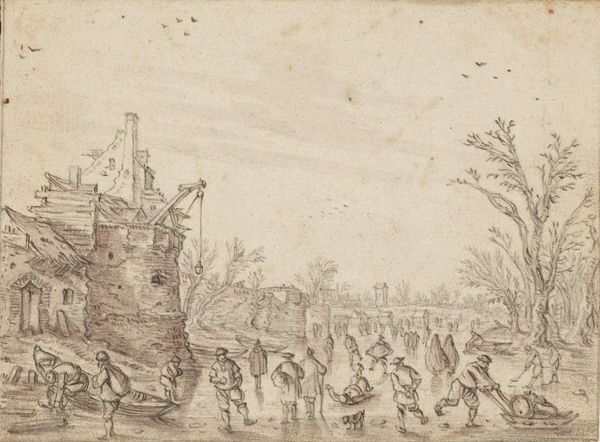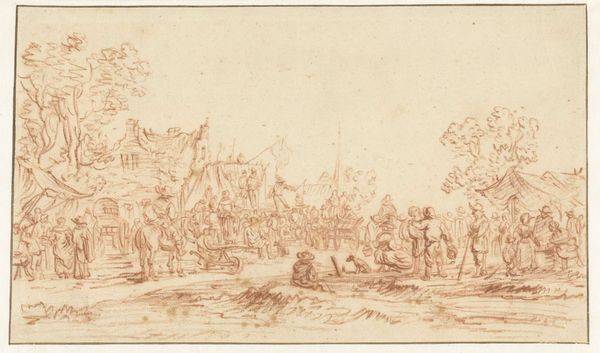
drawing, paper, ink, pencil
#
drawing
#
narrative-art
#
dutch-golden-age
#
pencil sketch
#
landscape
#
figuration
#
paper
#
ink
#
pencil
#
watercolor
Dimensions: height 228 mm, width 420 mm
Copyright: Rijks Museum: Open Domain
Curator: This drawing is titled "Christ Preaching from a Boat" and comes to us from Esaias van de Velde, circa 1630. Editor: It has a wonderfully melancholic feeling to it. A bit ghostly, actually. The gray wash really contributes to that, doesn't it? It’s reminiscent of twilight. Curator: It's executed in pen, pencil, and brown ink on paper. We can see van de Velde meticulously captured the architectural details on the left, next to a large group of townspeople and Christ on the water. How might the setting—and this emphasis on place—shape the narrative here? Editor: Well, the architectural decay seems crucial. Consider the history and potential symbolism; Is this simply part of the material realities, or are we witnessing the literal "old order" being questioned by these nascent and progressive ideologies in early modern Europe? What if the work represents a deeper commentary on shifts in power and belief? Curator: Indeed. I'm struck by how much emphasis is given to depicting the modes of transit. Everyone here seems to have arrived by boat or has tools used for transport of goods and labor nearby. Editor: I am very moved by the ways the landscape seems so integrated into this narrative. The landscape of spirituality, the land, literally and metaphorically worked and changed in ways that mirror their culture and community. The image presents a figure speaking not to a mass of supplicants inside a church, but engaging with everyday workers at the water's edge, quite close to their trades. What is it saying about our relationship to power? Curator: The integration you mentioned creates an intimate, almost casual dynamic—but this integration of the human figure with daily trades and work also speaks to broader concerns about production in early modern Northern Europe. Van de Velde is showing us not just Christ, but an entire society engaged in the very literal act of listening—almost "consuming"—knowledge in their local environments. Editor: It also feels important to emphasize van de Velde's positioning of a non-elite public within a scene featuring such a venerated and mythologized figure. To whom is the artist giving visibility and presence here, and how are social narratives possibly challenged by it? Curator: Absolutely. It really does re-contextualize the traditional Biblical scene, making us rethink labor's role in accessing spirituality. Editor: What an insightful reconsideration of landscape, class, and scripture all in a small pencil and ink drawing. Curator: Yes, I agree.
Comments
No comments
Be the first to comment and join the conversation on the ultimate creative platform.


